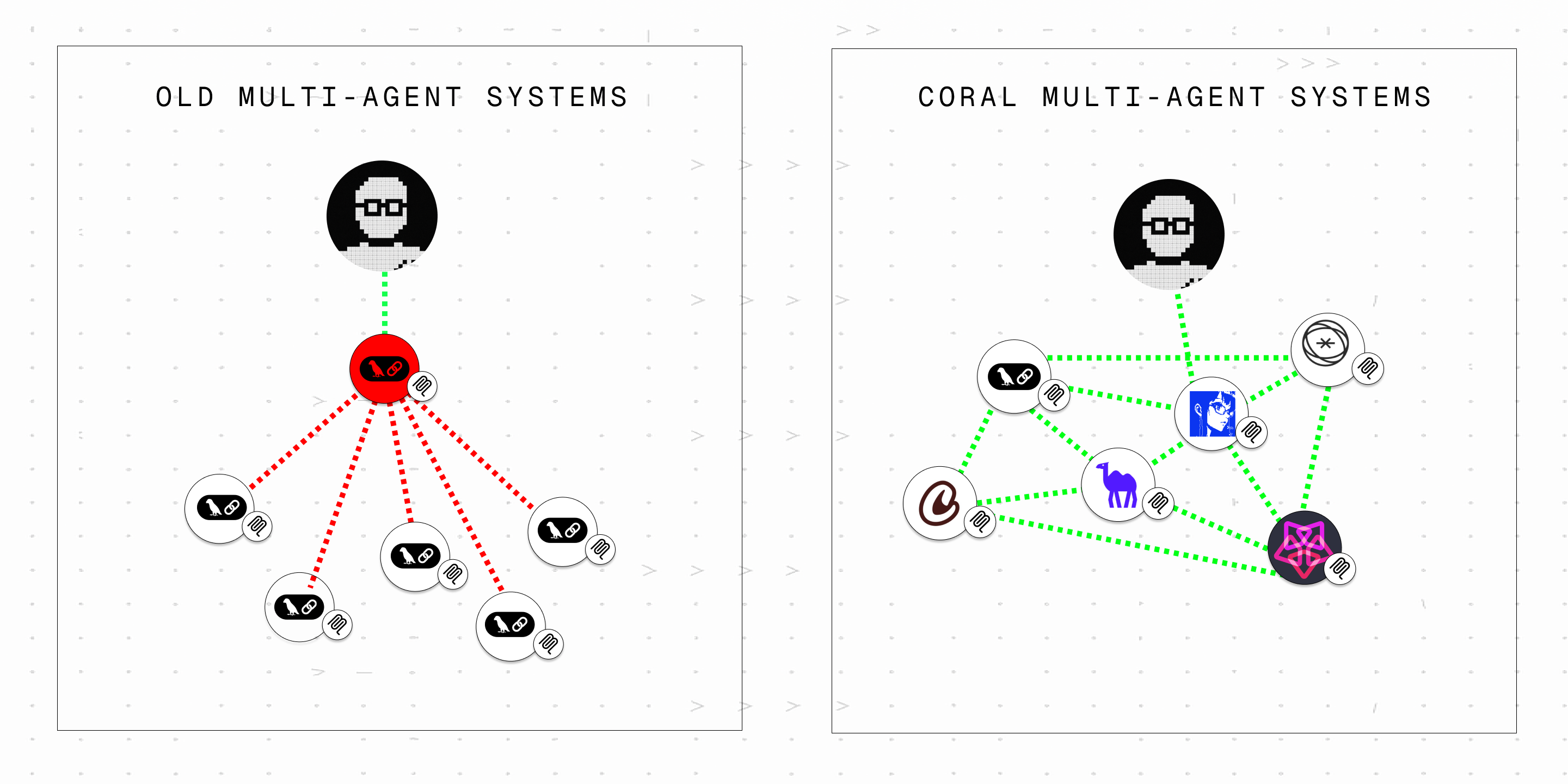Value for Developers
Coral Protocol allows agents to be reused across the internet, It allows agent developers to publish agents to the global marketplace where they can be used on demand by anyone.- Agent developers earn incentives when their agents are used.
- Application developers can mix and match from Coral’s growing library of agents to assemble advanced systems faster and without vendor lock-in.
Key Components
Coralized Agents
Add any agent from any framework to our marketplace in minutes.
Coral Marketplace
Discover, publish, monetize & verify agents with built-in attestation.
Coral Server
Orchestrate many agents together easily.
Coral Studio
Monitor, test & debug agents during development.
Coralizer
Turn any MCP server into a coralized agent.
Key Benfits
Built-in privacy
Built-in privacy
Agents run in isolated, scoped sessions to ensure complete data separation between users. This architecture eliminates the risk of cross-user data exposure, unlike other solutions where data can leak.
Build faster with reusable agents
Build faster with reusable agents
Leverage agents from any framework and integrate pre-built, specialized agents developed by others. Instead of reinventing the wheel, plug them directly into your system for faster deployment.
Scalable graph-based architecture
Scalable graph-based architecture
Most multi-agent systems are built hierarchically, where a central “planner” delegates tasks to worker agents or runs workflows sequentially. This structure quickly becomes a bottleneck, where one agent has too much responsibility.

“Enables structured and direct inter-agent collaboration, allowing all agents to monitor progress, assess results, identify bottlenecks, and propose refinements in real time.” “Reduces reliance on a single planner, supports adaptive plan updates, and minimizes redundant context passing, resulting in more scalable and cost-efficient execution.”This architecture has also demonstrated measurable performance gains on benchmarks:
“On the GAIA benchmark, Anemoi achieved 52.73 % accuracy with a small LLM (GPT-4.1-mini) as the planner, surpassing the strongest open-source baseline OWL (43.63 %) by +9.09 % under identical LLM settings.”Because each agent in Coral’s architecture handles smaller, well-defined responsibilities and communicates via a scalable graph, you gain:
- Higher throughput — Multiple agents run concurrently without blocking, enabled by Coral’s foundation in Kotlin rather than Python.
- Improved reasoning quality — Specialized agents continuously refine each other’s outputs in real time.
- Safer and more predictable AI systems — Instead of scaling performance by making models larger, Coral lets you scale by adding more intelligent agents. See more results on the GAIA benchmark: https://gaia.coralprotocol.org/

